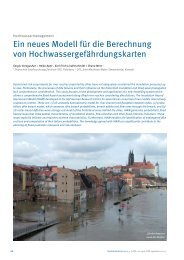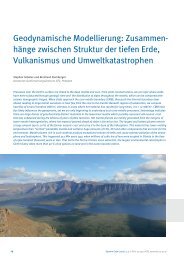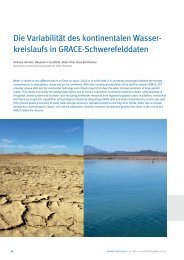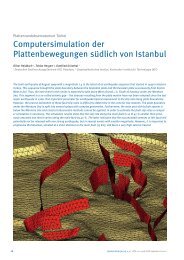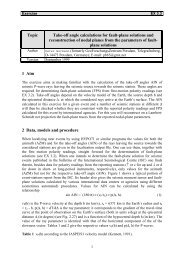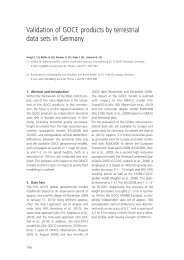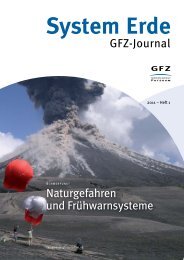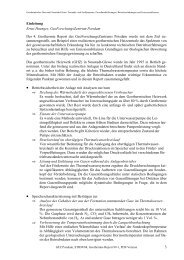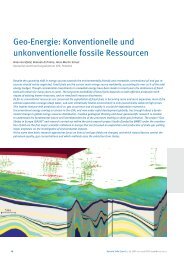2 Seismic Wave Propagation and Earth models
2 Seismic Wave Propagation and Earth models
2 Seismic Wave Propagation and Earth models
You also want an ePaper? Increase the reach of your titles
YUMPU automatically turns print PDFs into web optimized ePapers that Google loves.
2. <strong>Seismic</strong> <strong>Wave</strong> <strong>Propagation</strong> <strong>and</strong> <strong>Earth</strong> <strong>models</strong><br />
• appreciating how these source parameter estimates can be improved by using more<br />
realistic (2-D, 3-D) <strong>Earth</strong> <strong>models</strong> as well as later (secondary) phase onsets in the<br />
processing routines; <strong>and</strong><br />
• being aware of the common assumptions <strong>and</strong> simplifications used in synthetic<br />
seismogram calculations that are increasingly used nowadays in seismological<br />
routine practice (see 2.5.4.4, 2.8, 3.5.3).<br />
2.2 Elastic moduli <strong>and</strong> body waves<br />
2.2.1 Elastic moduli<br />
<strong>Seismic</strong> waves are elastic waves. <strong>Earth</strong> material must behave elastically to transmit them. The<br />
degree of elasticity determines how well they are transmitted. By the pressure front exp<strong>and</strong>ing<br />
from an underground explosion, or by an earthquake shear rupture, the surrounding <strong>Earth</strong><br />
material is subjected to stress (compression, tension <strong>and</strong>/or shearing). As a consequence, it<br />
undergoes strain, i.e., it changes volume <strong>and</strong>/or distorts shape. In an inelastic (plastic, ductile)<br />
material this deformation remains while elastic behavior means that the material returns to its<br />
original volume <strong>and</strong> shape when the stress load is over.<br />
The degree of elasticity/plasticity of real <strong>Earth</strong> material depends mainly on the strain rate,<br />
i.e., on the length of time it takes to achieve a certain amount of distortion. At very low strain<br />
rates, such as movements in the order of mm or cm/year, it may behave ductilely. Examples<br />
are the formation of geologic folds or the slow plastic convective currents of the hot material<br />
in the <strong>Earth</strong>’s mantle with velocity on the order of several cm per year. On the other h<strong>and</strong>, the<br />
<strong>Earth</strong> reacts elastically to the small but rapid deformations caused by a transient seismic<br />
source pulse. Only for very large amplitude seismic deformations in soft soil (e.g., from<br />
earthquake strong-motions in the order of 40% or more of the gravity acceleration of the<br />
<strong>Earth</strong>) or for extremely long-period free-oscillation modes (see 2.4) does the inelastic<br />
behavior of seismic waves have to be taken into account.<br />
Within its elastic range the behavior of the <strong>Earth</strong> material can be described by Hooke’s Law<br />
that states that the amount of strain is linearly proportional to the amount of stress. Beyond its<br />
elastic limit the material may either respond with brittle fracturing (e.g., earthquake faulting,<br />
see Chapter 3) or ductile behavior/plastic flow (Fig. 2.1).<br />
Fig. 2.1 Schematic presentation of the relationship between stress <strong>and</strong> strain.<br />
2



